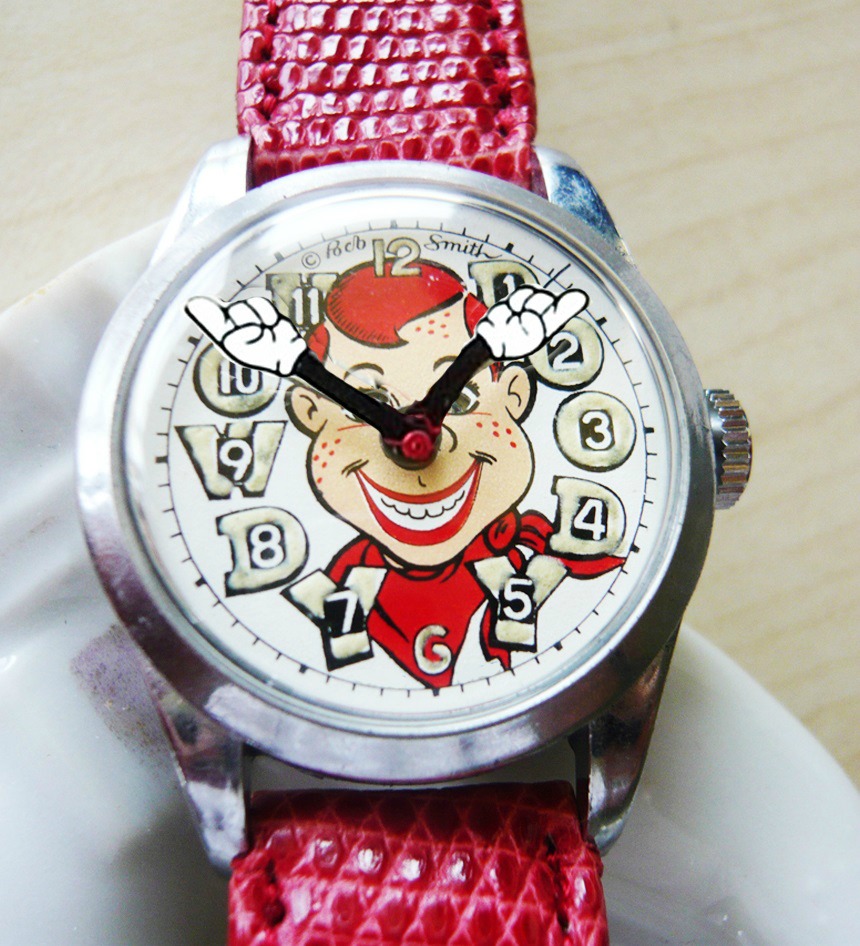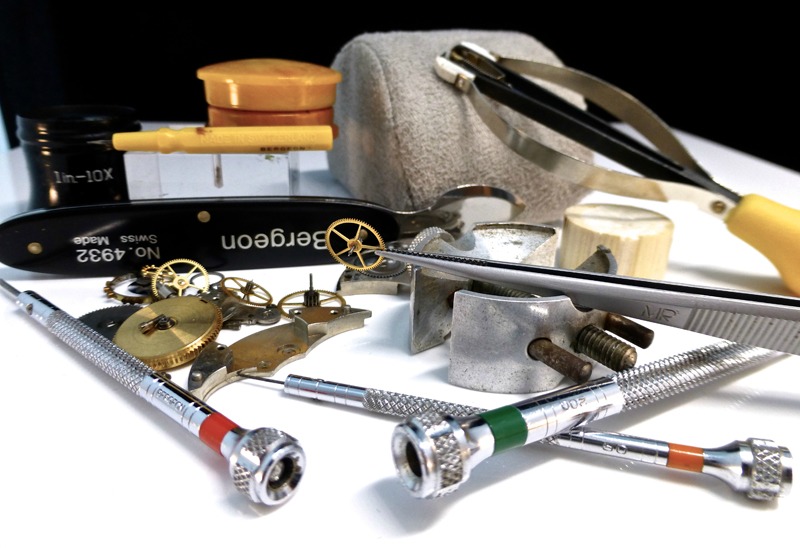
I came of age in the 1960’s and 1970’s in New England. If you asked most of my schoolmates back then what they wanted to be when they grew up, most would have said a fireman, policeman, cowboy, politician, lawyer, doctor, teacher, sailor…. just about anything but a watchmaker. The average age of watchmakers in the 1960’s and 1970’s was around 50 years old, and it seemed, at least in the United States, to be a dying breed, perhaps even an endangered species. Americans didn’t value watchmakers as highly skilled technicians, as they did in Switzerland and other European communities, they more or less saw them as the equivalent of a plumber, electrician, house painter or refrigerator repair man. Not something to strive for when you’re young …didn’t seem glamorous like a secret agent, lawyer, or computer punch card operator…. or something to get girls with like the lead singer of a rock band.
So when my Dad decided when I was 12, to take me to his retail jewelry store on Saturdays to teach me a “trade” – to learn how to fix watches -I wasn’t really that thrilled. Saturday’s were for playing basketball, tennis, baseball, tobogganing and hockey, depending on the season, not sitting at a watch bench, in my Dad’s store, doing an “Old Man’s Work”. But you can’t fight the powers that be, nor City Hall, and if my parents wanted me to learn how to fix watches, then so be it. Besides, I was following the family tradition of the trade…. I was to be a 4th generation watchmaker.
Today, there’s a few different ways to learn the skill of watchmaking: you can apprentice under a watchmaker, you can go to Watchmaking School, you can be self taught through books and video tutorials, or you can enroll in an online watchmaking course. But back then, and historically throughout time around the world, the way to learn watchmaking was to be brought in as an apprentice, and the younger the better. So there I sat, all thumbs, waiting for the watch knowledge to enter my brain through osmosis.
The first thing you must learn about watchmaking…in fact, probably the most important thing…is dexterity, and using a “loupe” (a magnifier for the eye). Anyone with half a brain can learn how a watch functions just by reading a book, or winding one up and watching what happens…. but, not everyone has the capability to manipulate tiny metallic objects with tweezers or tiny screwdrivers, to do what you command….and…. under the microscope. Also, you have to learn to keep both eyes open when you look through the loupe or you’ll get a wicked eye strain. So the first things I was taught, were how to control my dexterity and look at tiny objects through an eye loupe. My Dad, probably like watch teachers throughout history, had me picking up watch parts with tweezers…over and over again. It seems easy at first, until you put too much torque on the tweezers and the part launches itself across the room, never to be found again. There must be some alternate universe where all these lost watch parts go. (Think of your first time using chopsticks and trying to pick up a strand of spaghetti covered in marinara sauce). Once I was able to control the watch part within the tweezers and limit the “splash down” to my immediate area, I was ready for the next step: taking a watch apart.

Back in the 1950’s and 60’s there were actually “dollar watches”. These American made watches literally sold for one dollar. Most were made by the Ingersoll Watch Company (later evolved into the US TIME Corporation aka Timex). These “dollar watches” were mass produced, inexpensive pieces of metal that miraculously told time. They were rugged, simple, fun, and one of the first planned obsolescence products…. when it broke…. just throw it away, and buy another…the BIC lighters of timekeeping.
There were boxes of these broken down, cheap watches in my Dad’s watchmaker’s bench drawers…”break as many as you want son, tell me when your break rate is down to just a few”. So I began my career disassembling cheap, already broken watches…if a part launched across the room or I broke the part in half…who cares?… Certainly not my Dad.
Finally, I had the mastered dexterity: I could hold a part for about a full minute, without it moving or flying into my eye, and I could remove a tiny screw with a tiny screwdriver. I was now ready for the next step.
Let’s introduce some history here for a reference point of my story. The Ingersoll Watch Company, headquartered in Waterbury, Connecticut, became the leading manufacturer of “Character” watches in the USA. The quintessential character watch being “Mickey Mouse”. In fact, it’s been reported that the Mickey Mouse watch single-handedly saved the Ingersoll-Waterbury watch company from bankruptcy in 1933 by releasing the first Mickey Mouse watch. It was such a hit that it sold over 11,000 Mickey Mouse watches in Macy’s in New York the first day it was released. The watch retailed at just under $3.00. It’s been rumored that because of its cultural popularity, a Mickey Mouse watch was buried in a time capsule during the New York Worlds’ Fair in 1939.
Ingersoll became the Timex Watch Company in the 1960’s and continued to produce many different variations of the character watch including: Hopalong Cassidy, Donald Duck, Howdy Doody, Goofy, Minnie Mouse, Cinderella, the Lone Ranger, Popeye, Dick Tracy, Peter Pan, and Superman. All of these watches were very inexpensive and kept the original dollar watch philosophy…if it breaks, buy a new one.
My next step in the learning process, after the dexterity lesson (sic), was to actually work on a watch and have it function correctly. So, now comes the fun part. My mission:
“Good Morning Son. Your mission, today, should you decide to accept it, is to swap out the watch hands from Mickey Mouse, put them on Cinderella, and then to Popeye, and finally to Howdy Doody. As always, should you, or any of your split personalities, be caught or killed, Your Mother will disavow any knowledge of your actions. Good luck Son.”
